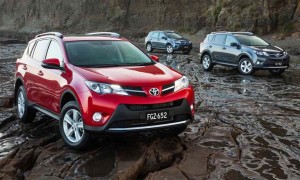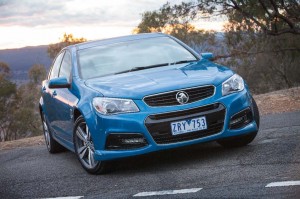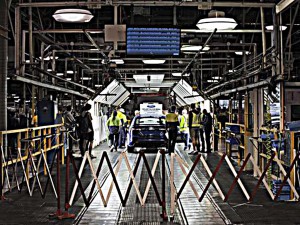
Ford's last XR6 rolled off the line at the company's Broadmeadows plant, marking the end of Ford production in Australia.
After a 91-year run, Ford Motor Co. has shut down its Australian automotive manufacturing operations. But it won’t be the last. General Motors and Toyota also plan to end production “Down Under” next year, effectively shutting down the once-vibrant Australian automotive industry.
The closures are expected to leave thousands of once well-paid workers without jobs and could have a significant impact on the Australian auto industry. But the phase-out of automotive manufacturing has been seen as inevitable, especially with the government backing out of its previous policy of offering automakers generous incentives to keep their plants open.
“Today is an emotional day for the entire team of Ford Australia,” said Graeme Whickman, CEO of Ford’s Australian subsidiary, as the last Falcon XR6 rolled off the line at the Broadmeadows plant in Melbourne.
About 600 employees remained at the plant as it slowly prepared for Friday’s shutdown. An estimated 2,300 employees, meanwhile, will be sidelined when GM’s Holden brand ends manufacturing in 2017, while Toyota has indicated it will eliminate 2,600 jobs on its own assembly lines.
Ford first launched production in Australia in 1925, part of founder Henry Ford’s strategy of building cars where the company sold them. Other manufacturers followed over the years, but building Down Under always posed problems, among them the relatively high cost of the local manufacturing base and fluctuations in the Australian dollar.
(Bronco, Ranger making their return to U.S. market. Click Here for the story.)
During the past decade, the industry was whittled down to three manufacturers: Ford, GM/Holden and Toyota. The makers tried a variety of options to prop up those operations. GM, for example, has exported some of the products made on the continent. The most recent was the Chevrolet SS sold in the United States.
The Australian auto market has long been a peculiar one, demanding products often unique from what companies like Ford and GM were building elsewhere. The Falcon XR6, for example was one of the few rear-wheel-drive models in the entire Ford global line-up.
Once one of Australia’s best-sellers, the company built about 3.5 million since its 1960 introduction. The nameplate was perhaps best known as the Interceptor coupe driven by Mel Gibson in the “The Road Warrior,” the second of his Mad Max movies.

Toyota will continue to see imported vehicles like the RAV4 once it shutters its Australian assembly operations in 2017.
While manufacturing costs – and the distance to other global markets – made it increasingly difficult to justify an Australian manufacturing base, politics seemed to have sealed the industry’s demise. Prior to federal elections in 2013, Holden indicated it would need still more subsidies to move ahead with plans to update its Australian-made product lines.
(Trump, Ford Motor Co. tussle over Mexico. For more, Click Here.)
After his election, new Prime Minister Tony Abbott quickly ruled that out, declaring, “There’s not going to be any extra money over and above the generous support the taxpayers have been giving the motor industry for a long time.” And when other members of the new government appeared to taunt Holden, GM executives announced they would call it quits.
Losing the three last automakers will be tough enough on both the federal and regional economies, but government and business leaders warn the impact will be far broader. Toyota, for one, has been directly responsible for at least 9,000 supplier jobs now likely to go away. Whether Australian auto parts companies will be able to find alternative outlets abroad remains to be seen, but large cutbacks seem all but certain.

Holden's Commodore VF was recently named Australian Car of the Year, but that isn't enough to keep GM making cars down under.
Not all the industry jobs will vanish. Ford plans to retain about 2,000 other employees Melbourne and in two other communities in the state of Victoria. They will handle sales and service for the import models the maker will now depend upon. And Ford will retain some Australian-based designers and engineers to help customize those imports for the local market.
(To see more about Ford moving small car production to Mexico, Click Here.)
But for the first time since a Model T rolled off the assembly line in the Victorian town of Geelong in 1925, Australians will no longer have the opportunity to buy a locally made Ford model.

